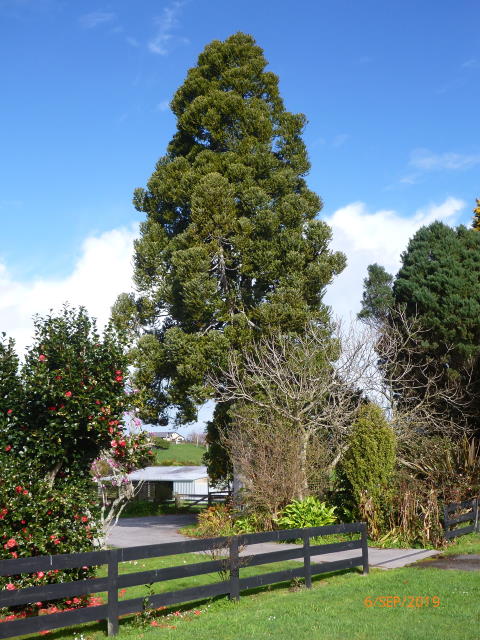
Kauri (Agathis australis) provides an impressive sense of scale in this Maungakawa garden.
Members of the Araucariaceae family (think monkey puzzle and Norfolk pine), kauri have an incredibly ancient lineage of hundreds of millions of years. The growth rings of fossilised trees preserved in Northland bogs provide scientists with thousands of years of detailed climatic history, allowing analysis of annual changes in atmospheric humidity, vapour pressure and carbon.
Kauri has been valued both for its timber and its resin. Maori harvested it for prestige items such as grand waka, while the British navy valued the tall straight trunks as masts; it is said that when Lord Nelson defeated Napoleon at the Battle of Trafalgar, his ship was fitted with kauri masts. Many of our oldest historic buildings are made of kauri. The resin was used by Maori as a fire-starter and making torches for night fishing; the resulting soot was then mixed with oils for tattooing. Europeans used Kauri gum to make varnish, and in the latter half of the nineteenth century it was a more valuable export than timber, wool or gold.
Some Northern Maori thought of the kauri as the legs of Tāne Mahuta, holding sky and earth apart. In other traditions this giant of the forest is connected to the giant of the ocean, the sperm whale, parāoa, both sons of Tāne Mahuta. When Parāoa failed to persuade Kauri to join him in the ocean, he suggested that they swap skins, saying, ‘One day men will cut you down and make you into waka, and with my skin you will be able to withstand the salty seas.’ This explains why the bark of kauri is thin and oozes resin like the ambergris of the sperm whale. (Vennell, Meaning of Trees)

